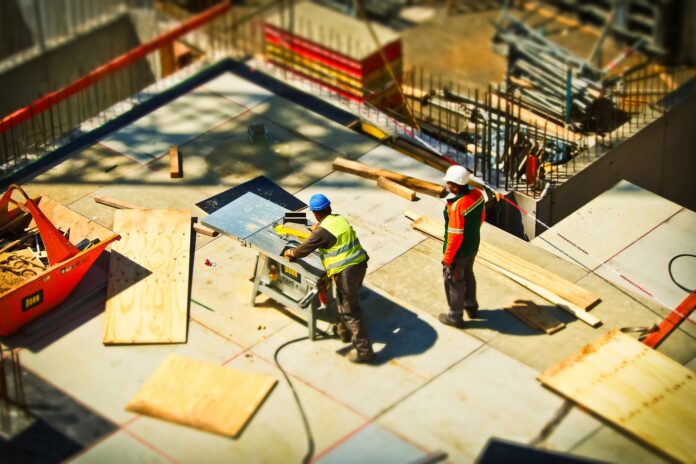Shifting demand and consumer preferences — like the demand for sustainable materials and reduced construction waste — are having a major impact on how construction firms approach new work, including the materials they choose for projects.
The building materials industry, as a result, is also evolving and experimenting with new materials that can meet the needs of global consumers increasingly concerned with labor costs, waste and the potential environmental impact of certain materials.
These five trends are having a major impact on the building materials industry right now — and have the potential to shape the industry well into the future.
1. Pandemic-Related Supply and Demand Issues
This is due, in part, to material costs that remain high as a result of the pandemic.
Ongoing measures to prevent the spread of COVID-19 — like China’s recent move to lockdown steel production in mid-January 2021 — have had major impacts on building materials manufacturers.
The construction industry is likely on its way to recovery. Industry activity may improve as vaccines become more widely available and consumer confidence recovers in the second half of 2021. The industry’s recovery so far, however, has been uneven.
In some areas, residential contractors have fared much better than nonresidential contractors. One report from the Pittsburgh Gazette, for example, found that nonresidential construction activity was down more than 77% in June 2020 compared to June 2019. By contrast, residential construction was down just 32%.
This may, in turn, affect demand for construction materials. Demand for nonresidential building materials may lag behind demand for residential materials, even after the pandemic is over.
The overall building materials market is likely to remain somewhat chaotic through much of the year, with the potential for increased stability as economic activity returns to normal post-pandemic.
Building materials manufacturers, however, may need to prepare for an uneven recovery, and greater demand for materials from residential contractors than nonresidential contractors.
2. Prefab and Modular Construction Drives Demand for Precast Materials
The prefab and modular construction industry may be on track for major growth over the next few years.
The lower labor costs of prefabricated and modular buildings, along with the potential for reduced waste and materials cost that prefab construction can offer, is driving increased interest from both the residential and nonresidential construction sectors.
As a result, demand for precast concrete panels and similar materials is also on the rise, with the overall precast concrete market forecast to be worth more than $174 billion by 2025.
Over the next few years, if these predictions hold, it’s likely that precast materials will become increasingly important to the building materials industry.
This increased demand for precast materials is also driving higher standards for quality and new methods of production.
The importance of technology like synchronous concrete vibrators, for example, in the manufacturing of precast concrete panels, over more conventional asynchronous vibrators is becoming better understood.
In the case of synchronous vibrators, alternative methods are helping to produce precast concrete that’s both stronger and more aesthetically appealing — two key factors that are often important to construction industry buyers.
3. Growing Interest in Green Building Materials
One of the most significant drivers of change in the building material industry has been the growing demand for more eco-friendly and sustainable construction materials.
This is reflective of a trend that’s been seen across the economy — consumers concerned with the environmental impact of consumption and economic activity want options that will help them cut down on their carbon footprint or reduce waste.
Growth in the green building materials sector has been driven by both green building materials — like bamboo, reclaimed wood, precast concrete and recycled steel — in addition to growing use of green insulation, which helps building owners reduce heating and cooling costs.
There’s even been renewed interest in traditional building techniques — like rammed earth, made from compressed high-clay-content soil — as large firms explore every available option for green building materials.
4. Reuse of Plastic Waste in Building Materials
At the same time, there’s also been increased interest in materials made from reused plastic waste, like recycled polyethylene terephthalate (rPET). Examples of materials made with recycled plastic waste include acoustic panels, plastic siding and “plastic lumber.”
Further research could expand potential applications of recycled plastic waste in building materials.
For example, studies have investigated the use of plastic waste as aggregate in self-consolidating concrete, recycled waste plastic bags as construction material and plastic wastes in fiber-reinforced concrete beams.
As demand for green materials increases, repurposed plastic could become a valuable resource for building materials manufacturers wanting to increase their use of recycled materials, like rPET.
5. Low-Carbon Concrete
Driven in part by the growing interest in green building materials, low-carbon concrete has become increasingly popular.
Global cement production accounts for around 7 to 8% of worldwide greenhouse gas emissions. If the cement industry were its own country, it would be the third-largest emitter of greenhouse gasses, just behind China and the U.S.
As demand for entirely new, sustainable materials has risen, so has the demand for greener variants of existing materials, like low-carbon concrete.
“Low-carbon” is an umbrella term that covers a variety of cement variants which include low-heat, low-limestone variants that produce up to 30% less carbon dioxide than traditional concrete or others, which replace the cement in concrete with alternatives, like steel slag powder or steel slag aggregate.
These variants are not always a replacement for high-carbon concrete, but may be suitable for certain projects, depending on budget and the stress the concrete will be under.
Further research, driven by growing demand for low-carbon alternatives to existing building materials, could help find new methods of production that further reduce the carbon needed to produce cement and concrete.
How These Trends May Impact the Building Materials Market
The building materials market may undergo several major transformations over the next few years.
Rising consumer demand for low-waste, eco-friendly materials is likely to drive continued growth in the sustainable building materials sector — benefitting manufacturers of materials like low=carbon concrete or reclaimed wood.
At the same time, the desire to reduce waste may change how construction firms approach new jobs. Precast concrete slabs and similar materials may become more central to the building materials industry as a result.




